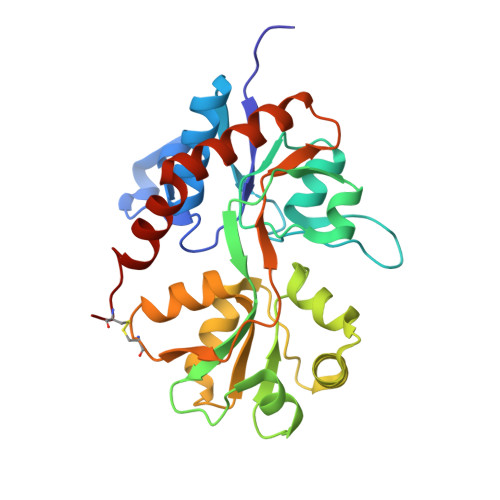Nanoscale Mobility of the Apo State and TARP Stoichiometry Dictate the Gating Behavior of Alternatively Spliced AMPA Receptors.
Dawe, G.B., Kadir, M.F., Venskutonyte, R., Perozzo, A.M., Yan, Y., Alexander, R.P.D., Navarrete, C., Santander, E.A., Arsenault, M., Fuentes, C., Aurousseau, M.R.P., Frydenvang, K., Barrera, N.P., Kastrup, J.S., Edwardson, J.M., Bowie, D.(2019) Neuron 102: 976
- PubMed: 31053408
- DOI: https://doi.org/10.1016/j.neuron.2019.03.046
- Primary Citation of Related Structures:
6GIV, 6GL4 - PubMed Abstract:
Neurotransmitter-gated ion channels are allosteric proteins that switch on and off in response to agonist binding. Most studies have focused on the agonist-bound, activated channel while assigning a lesser role to the apo or resting state. Here, we show that nanoscale mobility of resting α-amino-3-hydroxy-5-methyl-4-isoxazolepropionic acid (AMPA)-type ionotropic glutamate receptors (AMPA receptors) predetermines responsiveness to neurotransmitter, allosteric anions and TARP auxiliary subunits. Mobility at rest is regulated by alternative splicing of the flip/flop cassette of the ligand-binding domain, which controls motions in the distant AMPA receptor N-terminal domain (NTD). Flip variants promote moderate NTD movement, which establishes slower channel desensitization and robust regulation by anions and auxiliary subunits. In contrast, greater NTD mobility imparted by the flop cassette acts as a master switch to override allosteric regulation. In AMPA receptor heteromers, TARP stoichiometry further modifies these actions of the flip/flop cassette generating two functionally distinct classes of partially and fully TARPed receptors typical of cerebellar stellate and Purkinje cells.
Organizational Affiliation:
Integrated Program in Neuroscience, McGill University, Montréal, QC H3A 2B4, Canada; Department of Pharmacology and Therapeutics, McGill University, Montréal, QC H3G 1Y6, Canada.


















